
Friday, 7th March 2008
Brunei Gallery Lecture Theater
Jaina Art & Architecture
10th Jaina Studies Workshop at SOAS
North Bengal (Ancient Varendra): An Innovative Sub-Centre Of Jaina Sculptural Art
Part 2
 10th Jaina Studies Workshop at SOAS Lecture: "North Bengal (Ancient Varendra): An Innovative Sub-Centre Of Jaina Sculptural Art"
10th Jaina Studies Workshop at SOAS Lecture: "North Bengal (Ancient Varendra): An Innovative Sub-Centre Of Jaina Sculptural Art"
Dipl. Ing. Gerd J. R. Mevissen
Institut für indische Philologie und Kunstgeschichte, Freie Universität Berlin
Behind the head of Ṛṣabha rises a disproportionate thick shaft surmounted by a small triple parasol [26], the upper one decorated with garlands and crowned with a flower blossom.
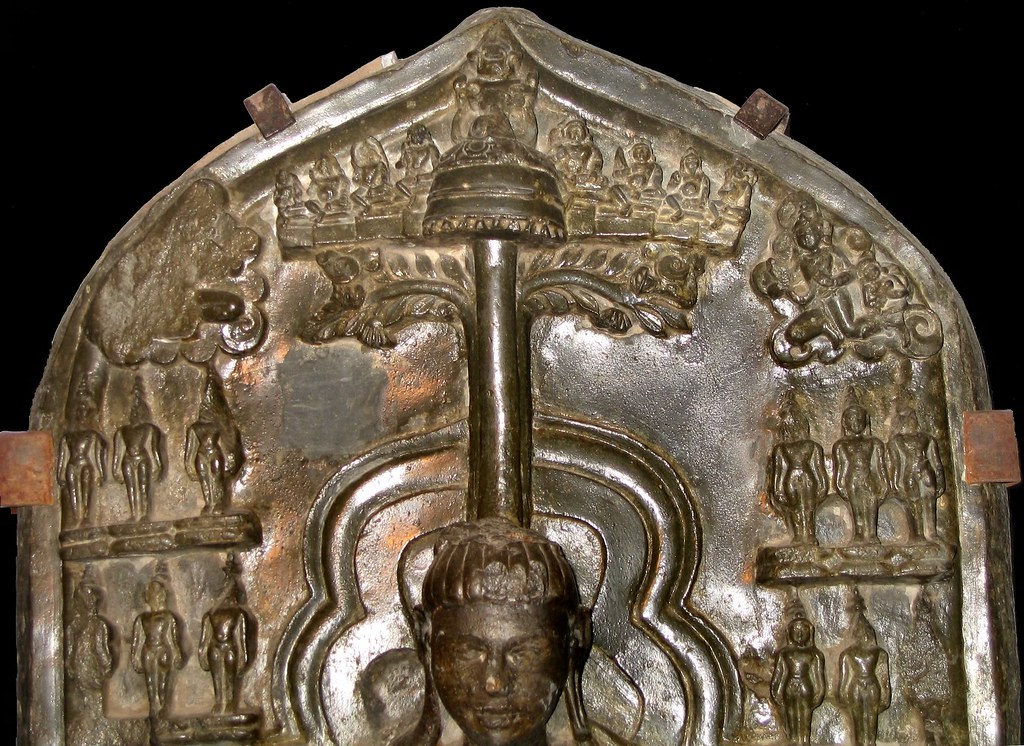
From the shaft issue two branches of a tree. They support a separate pedestal serving as a seat for eight miniature figures [27].

On close inspection it becomes clear that they represent the gods of the eight directions (Aṣṭadikpālas). The sequence starts on the extreme right [28]with Indra, the regent of the East, holding a small vajrain his right hand; next comes Agni (Southeast), pot-bellied with a pointed beard and a water-pot in his left hand;

Yama (South) is also pot-bellied, holding hisyamadaṇḍain the right hand; and Nairṛta (Southwest), of demonic appearance, holds a sword. The sequence continues of the other side [29]with Varuṇa (West) holding a snake; Vāyu (Northwest) with a billowing scarf encircling his head; Kubera (North), pot-bellied with a staff in his right hand; and finally Īśāna (Northeast) holding a śūla.

The representation of the Dikpālas is an extraordinary feature. Dikpālas are rarely found as subsidiary figures on Jina images; so far only three such sculptures are known, all from Bengal. Especially the region of Varendra, where the Dikpālas appear on several Hindu sculptures, seems to have played a vital role for including the Dikpālas in Jaina iconography, as will be evident from the following item.
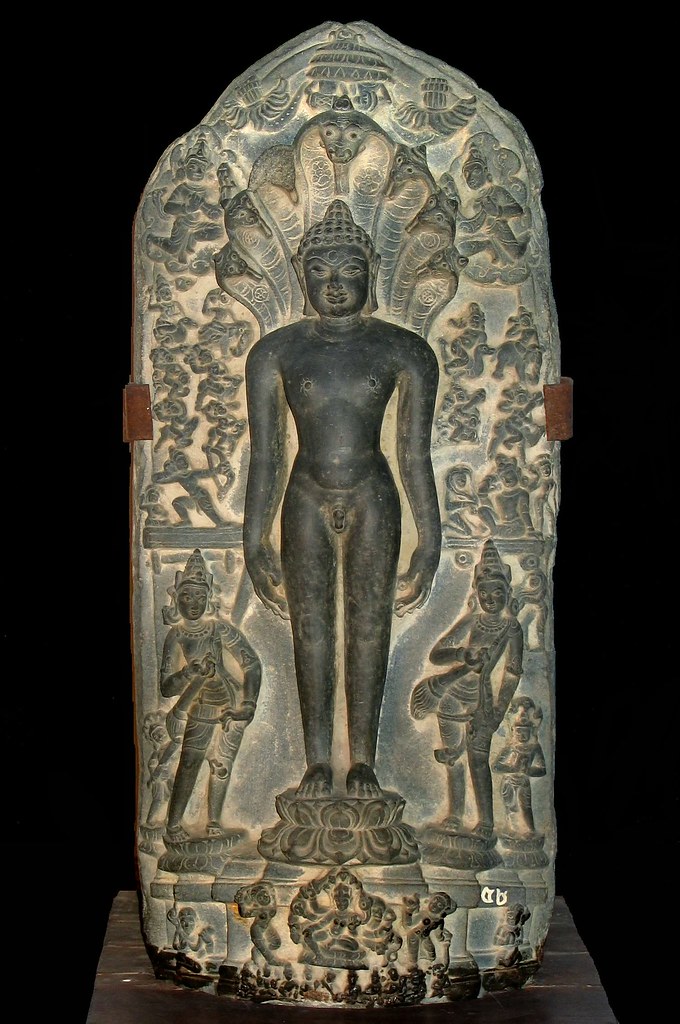 Tirtankara Pārśvanātha
Tirtankara Pārśvanātha
This sculpture of Pārśvanātha [30]hails from Khansama, a short distance south of the find spot of the previous image; it measures 61 cm in height and may date from the 11th century. It is now also kept in the Dinajpur Museum.
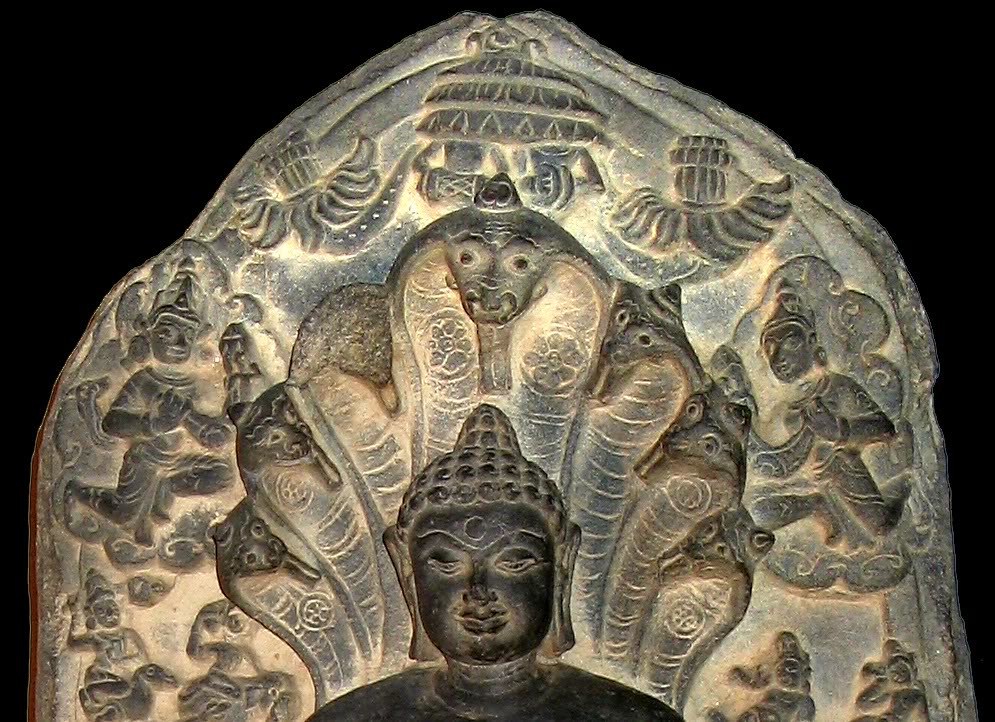
Pārśvanātha stands in kāyotsargapose, backed by a canopy of seven snake-hoods, each crowned with a jewel [31]. Garland-bearing Vidyādharas are floating on clouds. The pointed arch of the slab is decorated with a triple parasol, from which issue two stalks of flowers. The umbrellas also cover the heads of two musicians playing a drum and cymbals.

The triple umbrella is slightly tilted to the right, indicating that it is fastened to the shaft that is obliquely held by a small nāginīfigure standing behind the attendant on the proper right [32]. She is Padmāvatī, the queen of the nāgaking Dharaṇendra, who is depicted on the opposite. The sheltering of Pārśva by a parasol refers to the upasargaepisode during which Pārśva's enemy Kamaṭha conjured up a cloud burst, intending to drown Pārśva. The nāgaDharaṇendra appeared on the stage to protect Pārśva from the torrential rains, and his queen Padmāvatī helped him by holding up an umbrella. Both figures have a three-hooded snake canopy above their heads and stand on separate viśvapadmas, as do the larger attendant figures standing in front of them and holding cāmaras in the right hands.
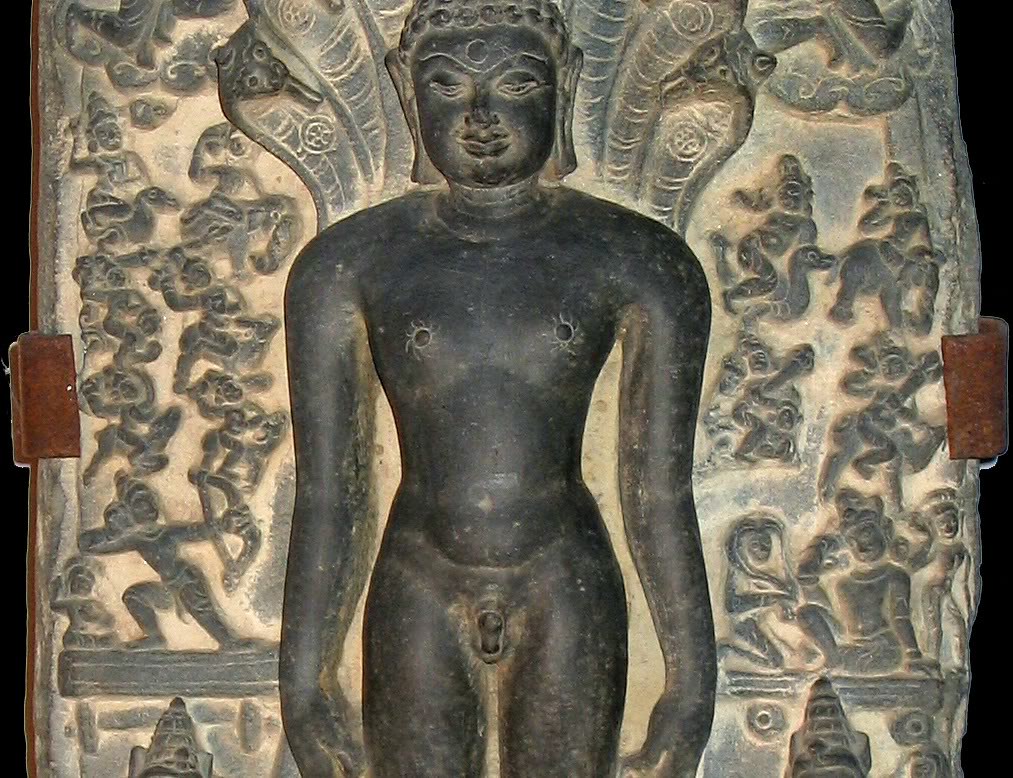
One of the upasargas that were inflicted by Kamaṭha was an attack by demons and evil spirits. In this sculpture the attacking army uniquely consists of Dikpālas, all riding their respective vāhanas [33]. On the proper right we see six Dikpālas, on the left four. The ones on the right [34]are (from top to bottom) Varuṇa on a goose, Indra on an elephant, Kubera or Nairṛta on a man, Īśāna on a bull, Vāyu on a deer, and Yama on a buffalo. All Dikpālas are portrayed in aggressive poses while accompanying the attacking Kamaṭha, who is shown on a chariot below, vigorously standing in ālīḍhapose and aiming his bow at the Jina. A small seated female figure at his back seems to spur him. The chariot is depicted frontally, as is suggested by the horizontal axle visible below; it is thus shown in approaching movement.

On the opposite the scene has changed dramatically [35]. Kamaṭha, again on his chariot, which is now shown in profile, i.e. departing, is seated, bowing and resting his head in sorrow on his hand; he thus acknowledges his defeat. The lady at his back has got up and is going away. Another female figure kneels in front of him, presenting her dishevelled tresses in despair. Of the formerly six Dikpālas only four have survived: Varuṇa, Indra, Nairṛta or Kubera, and Īśāna, all moving away from the Jina on their vehicles and greeting with their right hands. The fact that Yama and Vāyu are absent here is quite significant: It implies that the gods of Death and Storm have been absorbed by the deep and steadfast meditation of Pārśva.

The centre of the pedestal is occupied by an eight-armed form of theyakṣīPadmāvatī backed by a canopy of five snake-hoods [36]. She is flanked by two female figures: The one on her right is dancing and approaching her in a seductive pose, with her garment slipping off. The one on the left, properly dressed, greets her with the right hand while the left rests on a staff, as if going away. These female figures probably represent one of the damsels sent by Kamaṭha to lure Pārśva away from his trance, though here she focuses her seductive energy on Pārśva's yakṣī.Unsuccessful and repenting, she gives up and leaves the stage, similar to the Dikpālas above.
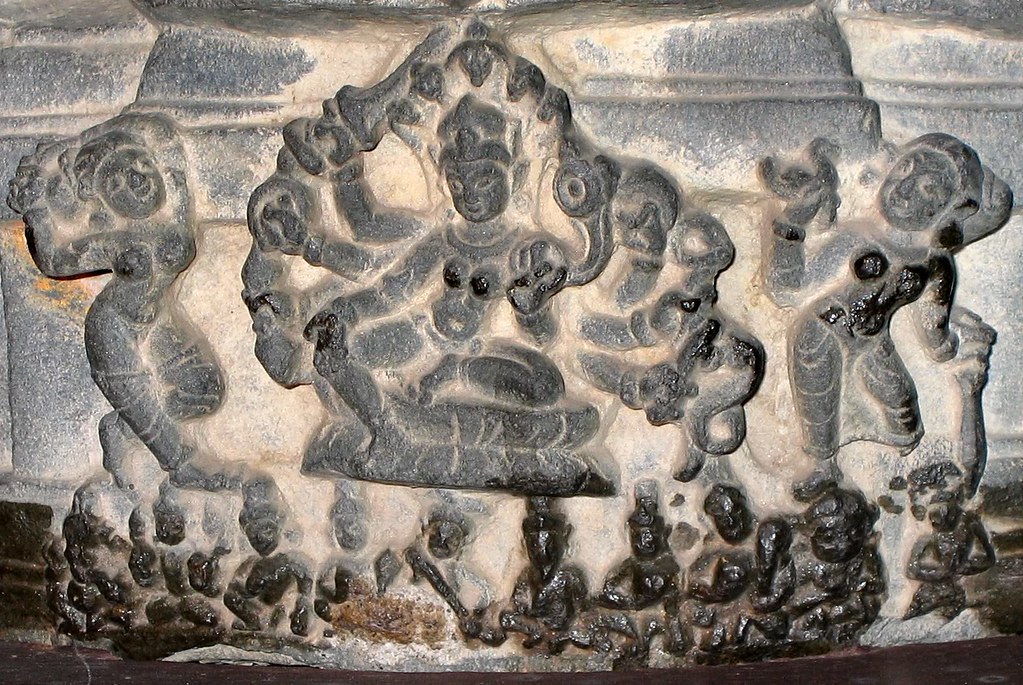
At the very bottom of the pedestal are carved the Navagrahas in a row. The planetary gods too were employed by Kamaṭha in the upasargas. Here they are accompanied by Gaṇeśā at the beginning, as often found in Navagraha panels from Bengal. In the present context this might suggest that also Gaṇeśa functions as Kamaṭha's henchman, as do the Dikpālas above.
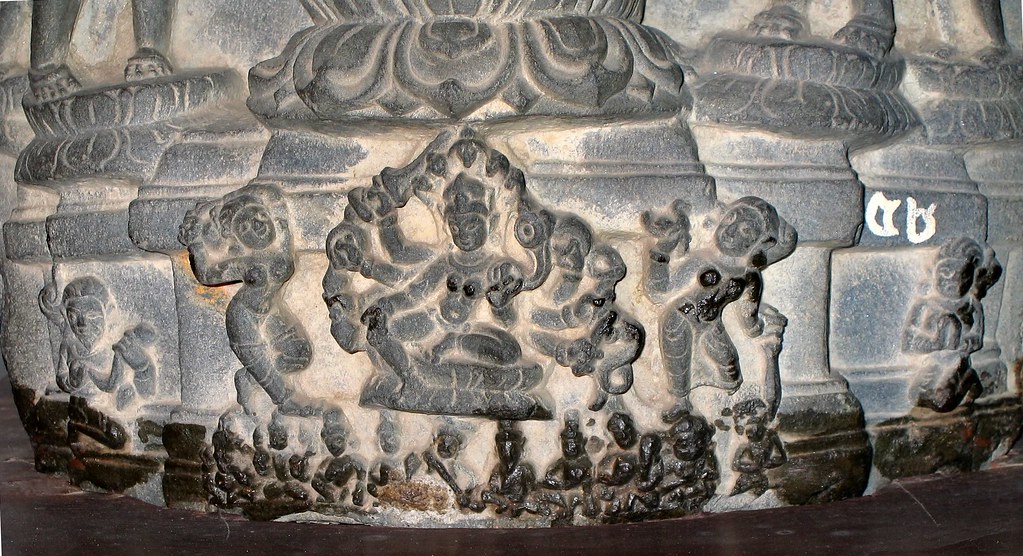
On either side of the base we see a worshipper [37], a male holding a garland and a female in adoring pose, possibly representing the donor couple. If so, they deserve to be credited with having commissioned a unique and iconographically most innovative piece of sculpture, unparalleled in the whole array of Jaina works of art.

Let us now have a look at another cluster of sculptures, originating from a region some 160 km further south of the Dinajpur area, near the banks of the Gaṅgā. [38]This Jina image, perhaps representing the 16th Tīrthaṅkara Śāntinātha, was found at Mandoil, northwest of Rajshahi, now preserved in the Rajshahi Museum. It is 67 cm high and may date from the 12th century.

The nude Jina stands in kāyotsargaattitude against an architectural throne-back. His head is encircled by a slightly pointed nimbus, from which rises the shaft of a triple umbrella. The space beneath the umbrellas is embellished with the foliage of a tree and two musicians playing a drum and cymbals, flanked by Vidyādhara couples. Along the border are depicted 24 miniature Jina figures, all seated and completely identical; not even Pārśvanātha seems to be distinguished by his snake-hood. The Jina is accompanied by two nimbate cāmara-bearing attendants. [39]

In the centre of the pedestal can be seen a cakraflanked by a pair of deers. [40]Since the deer is the cihnaof Śāntinātha, the image has generally been identified as representing the 16th Tīrthaṅkara. However, from at least the 10th century onwards the dharmacakraflanked by two deers came to be associated with all Jinas; furthermore, the cihnanever occurs doubled but is always carved separately. So there remain some doubts about the identification as Śāntinātha.
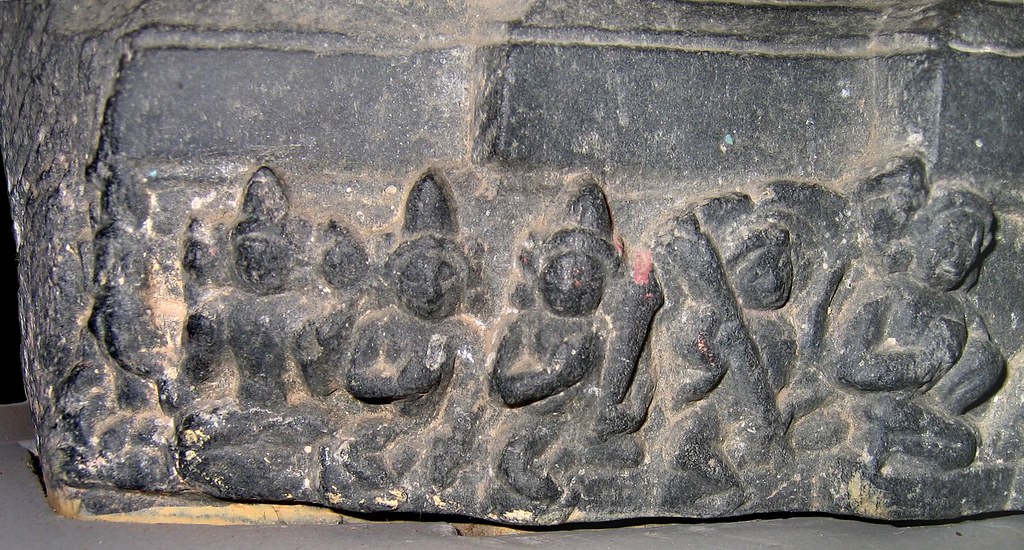
Below is a four-armed goddess seated in padmāsanawithin a ring, flanked by two elephants and two adoring figures, perhaps the donor couple. The lateral sides of the pedestal are filled with seated figures of the Navagrahas. Again the sequence starts on the proper right [41]with Gaṇeśa and continues with Sūrya, Candra, Maṅgala and Budha.

The remaining five Grahas [42]are shown on the proper left side: Bṛhaspati, Śukra, Śani, Rāhu and Ketu.

This image of Ṛṣabhanātha [43], also from Mandoil, does not pose any problems as regards its identification. Measuring about 78 cm and dating from the 12th century, it is now preserved in the Asutosh Museum, Calcutta.
Though the Jina's head is missing, the hair-locks falling on both shoulders are still visible; the bull cihnais carved in the centre of the pedestal, flanked by five kneeling figures, possibly the donor's family. We observe the already well-known details: the triple umbrella, bodyless hands playing drum and cymbals, two Vidyādhara couples and cāmara-bearers. Different, however, is the lateral placement of the Navagrahas, five on the proper right and four on the proper left, with an additional figure of Gaṇeśa at the end of the sequence. This arrangement is usually not found on images from Varendra, but from sites in southwest Bengal, Orissa and Bihar.

So far we have only seen sculptures of Jinas, but there are also a few images of other Jaina deities. This representation of the so-called Tutelary Couple [44]dating from the 11th or 12th century was found only a short distance from Mandoil at Deopara. It once belonged to the collection of the Rajshahi Museum but seems now to be lost.
Both figures hold a child in the left lap and offer a fruit with the right hand in varadamudrā. Five more children are depicted in the pedestal, flanked by two donor figures. Between the seated couple rises the trunk of a tree with three foliated branches. From the central branch hangs a swing on which sits another child. Thus the total number of children comes to eight.
Above the tree is a Jina figure seated in dhyānamudrāon a lotus against a throne-back. He is flanked on either side by a standing, apparently nude figure with hands in greeting gesture; higher up are the ubiquitous garland-bearing Vidyādharas floating on clouds. From behind the nimbus of the Jina rises the shaft of a triple umbrella.
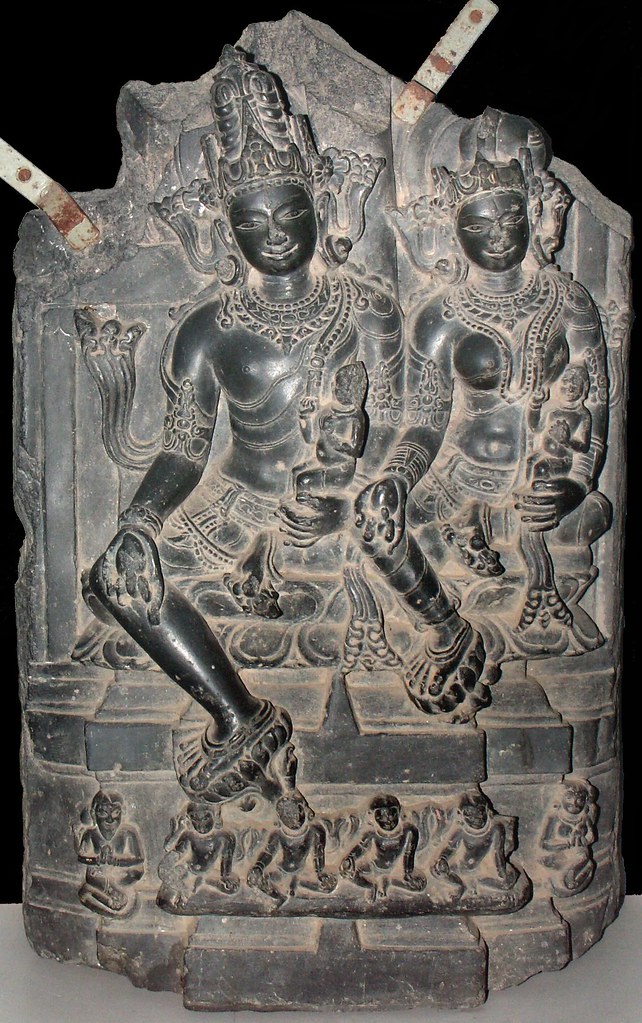
A second sculpture of the Tutelary Couple [45], also from Deopara, is still kept in the Rajshahi Museum. It is a fairly large fragment measuring 56 cm in height, preserving the lower part of the original image, which must have been about twice this size. It may date from the 12th century.
Again we see a male and a female figure each holding a child in the left lap and a fruit in the right hand showing varadamudrā. The male figure is crowned with a high jaṭāmakuṭa, the hair of the female is arranged in a large bun; both wear all kinds of jewellery and upavītas. Though the upper part of the sculpture is missing, the trunk of a tree is still discernible rising from behind the left arm of the male figure, suggesting that it once terminated in a tree with a seated Jina at the top. On the pedestal are carved four male figures seated on a common cushion [46]. They are flanked by two kneeling figures in adoring pose, a bearded male on the proper right and a female on the opposite, possibly the donor couple.

Apart from the nine sculptures just shown, two more have been reported to originate from North Bengal, but they are unpublished and I have not been able to see them so far. We are thus left with nine extraordinary sculptures from ancient Varendra, seven Jinas and two Couples. Their most distinctive feature is the inclusion of numerous subsidiary figures, such as Navagrahas [20-21, 36, 41-42, 43], Dikpālas and donor figures. Whereas the inclusion of Navagrahas is witnessed also in other parts of India during this period (10th- 12th century), thus indicating a rising awareness of astrological thoughts and superstitions that entered all Indian religious systems, the inclusion of the Dikpālas is mainly a Bengali phenomenon. However, the placement of the Dikpālas high up on the branches of the caityavṛkṣa, as seen in the Ṛṣabhanātha from Bheloa [27-29], is very unusual: It would suggest that the mundane space that is defined by the gods of the directions functions as an extended umbrella crowning and protecting the Jina. Furthermore, the use of Dikpāla figures in a narrative context, as seen on the Pārśva sculpture from Khansama [33-35]where they function as henchmen of Kamaṭha in the upasargaepisode, is unparalleled in the whole of India and points to the imaginativeness and originality of the artists in Varendra.

The depiction of small donor figures in the pedestal [47], on the other hand, indicates that the artists were well-acquainted with the prevalent mode in the region since it is a ubiquituous feature of sculptures from Bengal in general, whatever religion they are affiliated to. In the present Jaina context the donor figures add a certain degree of liveliness and humanity to the otherwise often rather stiff and formalized Jaina imagery.

Coming to the end of my presentation, the question of the geographical distribution of the extant sculptures should briefly be addressed. [48]Looking at the map we can recognize two clusters, one in the north around Dinajpur, the other one further south near Rajshahi. In addition, isolated find spots are located in the west near Gaur and in the east in the ancient city of Mahasthangarh near Bogra. Since the Dinajpur sculptures generally seem to be slightly earlier than the Rajshahi ones, it would appear that a new wave of Jainsm entered Varendra around the 10th century, possibly from Bihar in the west, and then spread further south. Due to the lack of historical documents it can only be surmised that during the 12th century the Jaina establishments in Varendra were somehow connected with those then florishing in the more southern regions of Bengal, in the modern districts of Burdwan, Bankura and Purulia.

The dissemination of Jainism seems to have been fostered by Jaina merchants trading along the ancient trade routes. [49]Varendra was located right at the junction of two major trade routes: the west-east route connecting the Ganges plains of U.P. and Bihar with the ancient kingdom of Kāmarūpa in present-day Assam on the one hand, and on the other the south-north route connecting the port cities along the coast of Bengal and Orissa with the Himalayan countries of Sikkim, Bhutan and Tibet.

A closer look at the geographical features of the find spots of the sculptures reveals that they are almost exclusively located along a distinct river system [50], which starts from the northern banks of the Gaṅgā (Padma) river near the mouth of the Mahānandā and then follows the Mahānandā and Purṇabhābā rivers northwards up to Khansama. This seems to have been one of the major trade routes used by the Jaina merchants.
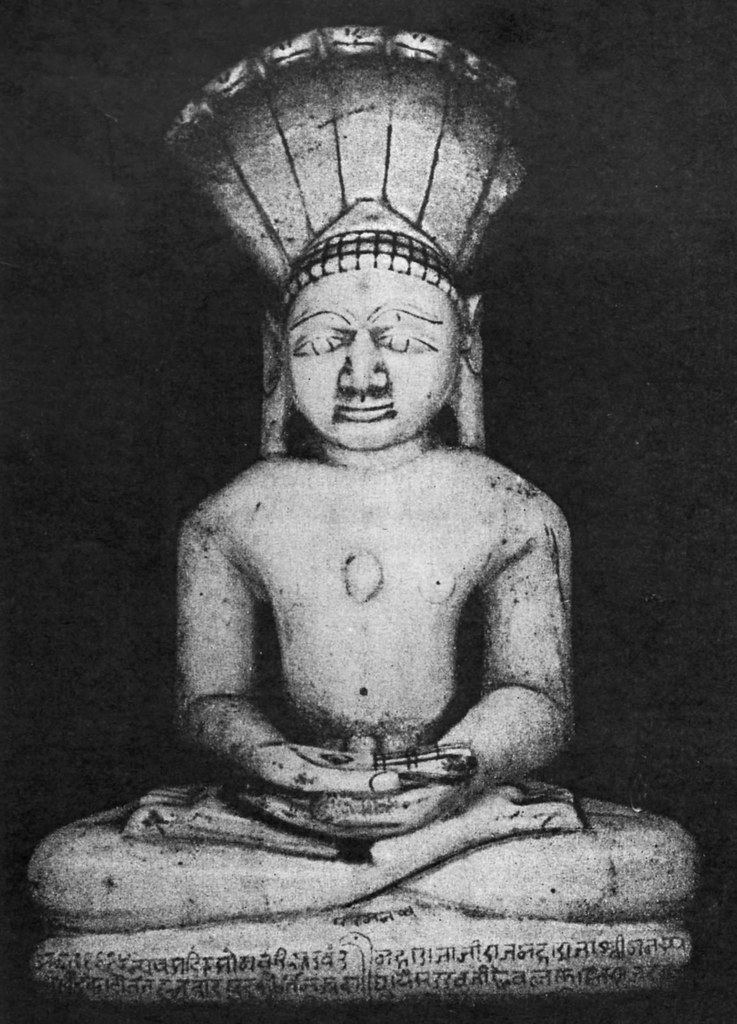
After the 12th century, Jainism apparently disappeared from Bengali soil. It was only from the 17th century onwards that Jaina merchants migrated back to Bengal from the west of India for economic reasons. A rare example of late Jaina activity in East Bengal is this 19th-century marble sculpture of Pārśvanātha [51], discovered in Dhakaand now kept in the Archaeological Department there. Since white marble is not readily available in Bengal, the icon was probably imported from western India, as is also suggested by its style. It thus cannot be regarded as representing the easternmost extension of Jaina art production on the Indian subcontinent.

However, in the end of the 20th century we witness a renewed activity in creating Jaina icons in Bangladesh. The metal casting industry at Dhamrai, located a short distance northwest of Dhaka [52], nowadays has started producing copies of ancient Jaina icons to be sold to tourists and collectors.

One of these is a double image of Ṛṣabhanātha and Mahāvīra [53]. The original piece - on the left - hails from Alaurain Purulia district, dating from the 12th century, now in the Patna Museum. Another example is the celebrated Pārśvanātha from Akota [54], dating from c. 950 AD, now in the National Museum, New Delhi - again on the left.

Whatever the art connoisseur's judgement on the aesthetic quality and the iconographic correctness of the copy from Dhamrai will be - there is, for example, a curious reduction of the original number of eight small Graha figures to six, though larger ones [55]-, the modern craftsmen of Dhamrai deserve at least to be credited with having surpassed their Varendra predecessors in establishing the easternmost workshop producing Jaina artefacts.
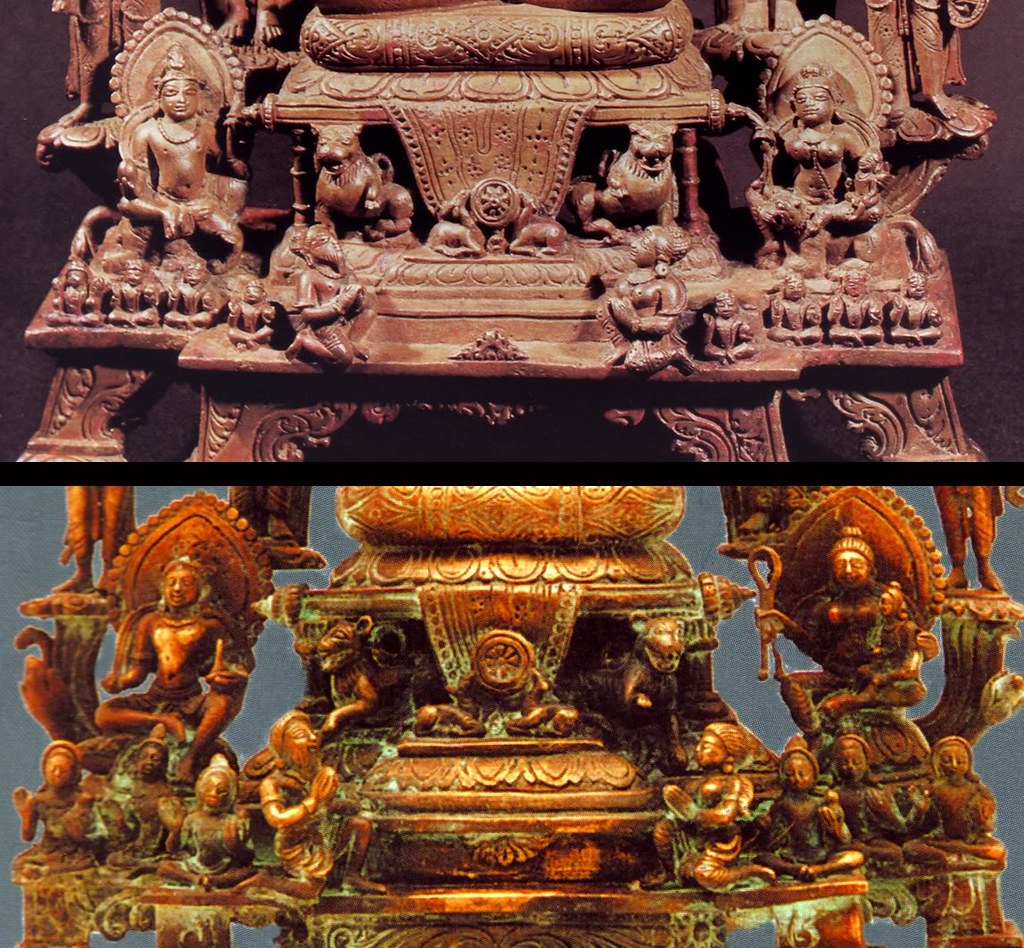
Full SpeechAudio:
|
 Dipl.-Ing. Gerd Mevissen
Dipl.-Ing. Gerd Mevissen